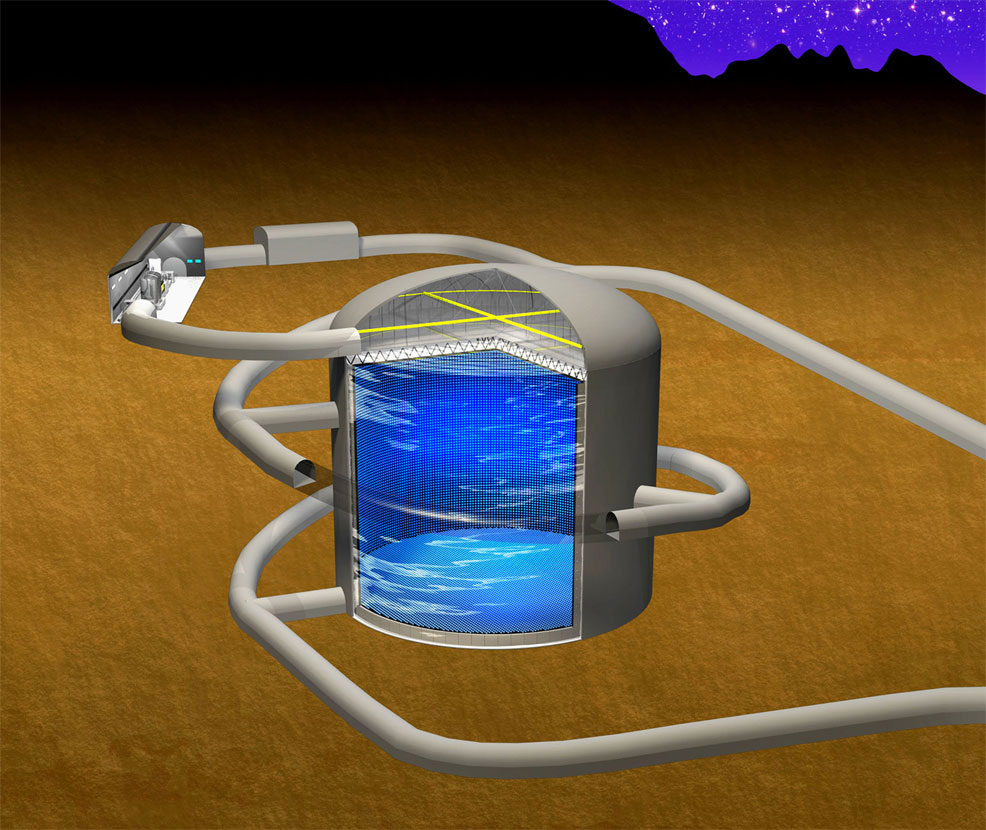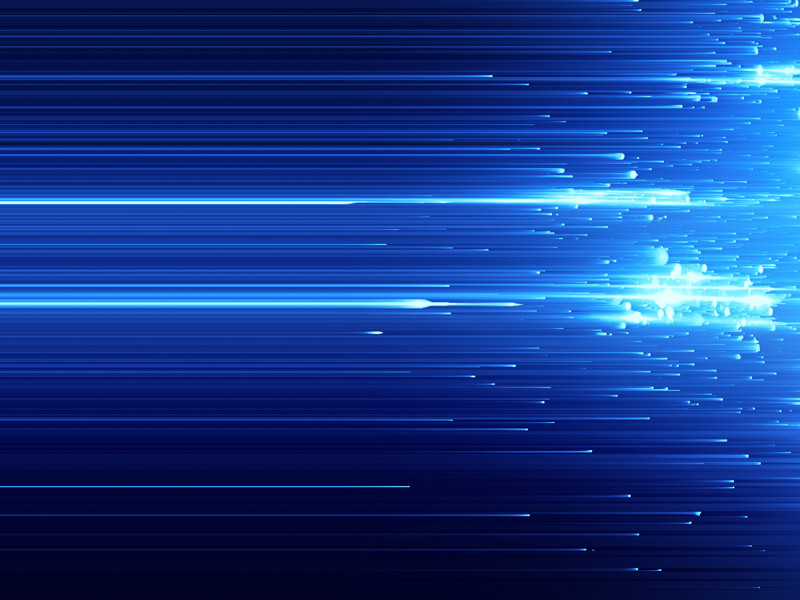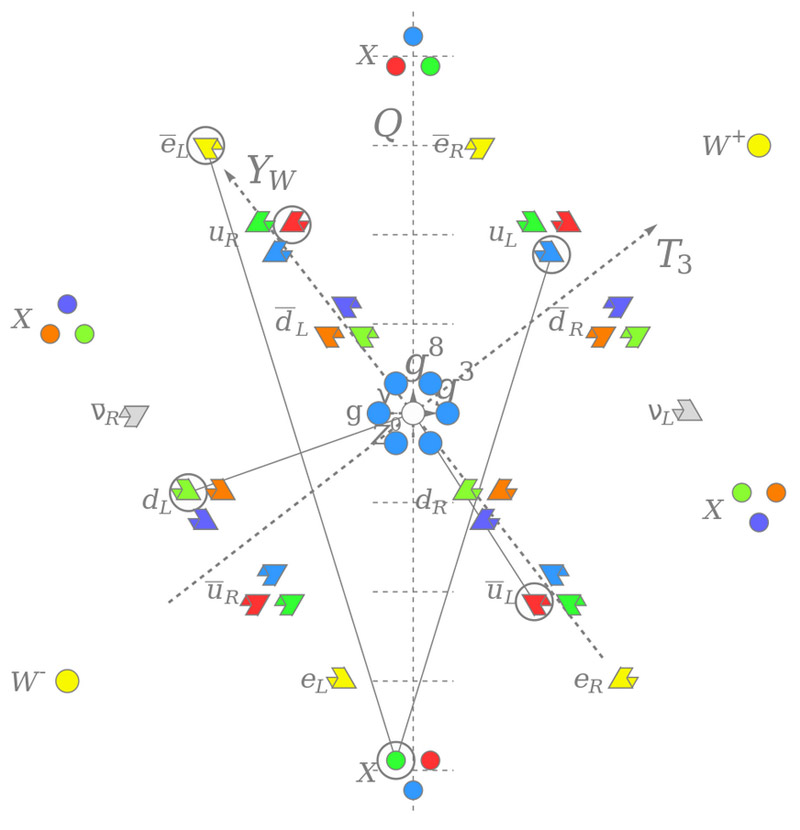
8th September 2019 Japanese neutrino detector will observe proton decay Japan will construct a new underground neutrino detector in Hida, Gifu Prefecture, sources close to the project have revealed. With operations beginning in the late 2020s, it could make the world's first observation of proton decay, and reveal new clues as to how supernovae explosions create heavy elements.
Neutrinos are subatomic particles that are very similar to electrons, but without an electrical charge. They are incredibly tiny, with an estimated diameter of 0.000000000000000000000001 metres – or 1 yoctometre – which is 14 orders of magnitude smaller than a hydrogen atom. They exist in vast numbers, and from the Sun alone, 100 trillion pass through your body every second. A block of lead, one light year in thickness, would succeed in deflecting only half of them. Because they are so small (with a mass close to zero), their interaction with matter is extremely weak and rare. This is good for our health, but poses a major challenge for scientists trying to observe them. Since neutrinos only interact via the weak subatomic force and gravity, neutrino detectors must be very large and ideally built underground to provide isolation from cosmic rays and other background radiation. The field of neutrino astronomy is still very much in its infancy – as of today, the only confirmed extraterrestrial sources are the Sun and the supernova 1987A found in the Large Magellanic Cloud. Another likely source is the high energy blazar, TXS 0506+056, located 3.7 billion light years away.
Japan has its own neutrino detector – the Super-Kamiokande, which began operations in 1996. This provided the first evidence of neutrino oscillation and the first experimental observation supporting the theory that the neutrino has non-zero mass, a possibility that theorists had speculated about for years. The 2002 and 2015 Nobel Prizes in Physics were awarded to researchers at the Super-Kamiokande for their work. Following a series of upgrades, a successor to the Super-Kamiokande – known as the Hyper-Kamiokande – is now in development. Japan's science ministry will include in its 2020 budget a request for part of the construction cost, estimated to total about 68 billion yen ($635 million). The final costs will be reduced by collaborating with overseas research institutes, according to the Ministry of Education, Culture, Sports, Science and Technology. A total of 13 countries from three continents are now said to be involved. The University of Tokyo, a planned operator, says the new detector will obtain data 10 times faster than its predecessor. The facility will feature a billion litres of ultrapure water, 20 times larger than the tank for the Super-Kamiokande and reaching a depth of 60 metres (197 ft). This increased capacity will be accompanied by a proportional growth in the number of sensors, with 40,000 ultra-sensitive devices catching light emitted by neutrinos hitting the water. Each will exhibit a 50% higher photodetection efficiency than that of the Super-Kamiokande photosensors. The proposed site of the Hyper-Kamiokande is 650 metres (2,133 ft) below the mountains of Hida, Gifu Prefecture. Among the key scientific objectives of the project is the world's first detection of proton decay. This hypothetical form of particle decay, in which a proton decays into lighter subatomic particles, is predicted to be among the last remaining sources of energy in the so-called "degenerate era" of the universe approximately 10,000,000,000,000,000,000,000,000,000,000,000,000 (10 trillion trillion trillion) years into the future. The phenomenon was first formulated by Andrei Sakharov, in 1967. Despite half a century of research efforts, no proton decay has ever been observed – but if the Hyper-Kamiokande succeeds, it could help to explain the baryon asymmetry of the Universe, and confirm that three of the four forces of nature split off from a single, fundamental force at the beginning of time. Although referred to as "proton" decay, the effect could be seen from neutrino reactions.
A model of proton decay. Credit: Cjean42 [CC BY-SA 3.0]
Another objective of the project is to reveal new clues as to how supernovae explosions create heavy elements. Despite widespread acceptance of the basic scientific model, the exact details of initiation and of the heavy elements produced in these catastrophic events remain unclear. Because neutrinos interact so little with matter, it is thought that a supernova's neutrino emissions carry information about the innermost regions of the explosion. The Hyper-Kamiokande could also provide early warning of a supernova in our Milky Way galaxy, enabling better astronomical observations. A neutrino burst is expected to reach Earth before any electromagnetic waves, including visible light, gamma rays, or radio waves. Neutrinos are produced in very large quantities by a supernova, and they are not significantly absorbed by the interstellar gas and dust of the galactic disk. According to sources close to the project, construction of the Hyper-Kamiokande is now scheduled to start in April 2020, and the first scientific observations will be made during the late 2020s.
Comments »
If you enjoyed this article, please consider sharing it:
|









